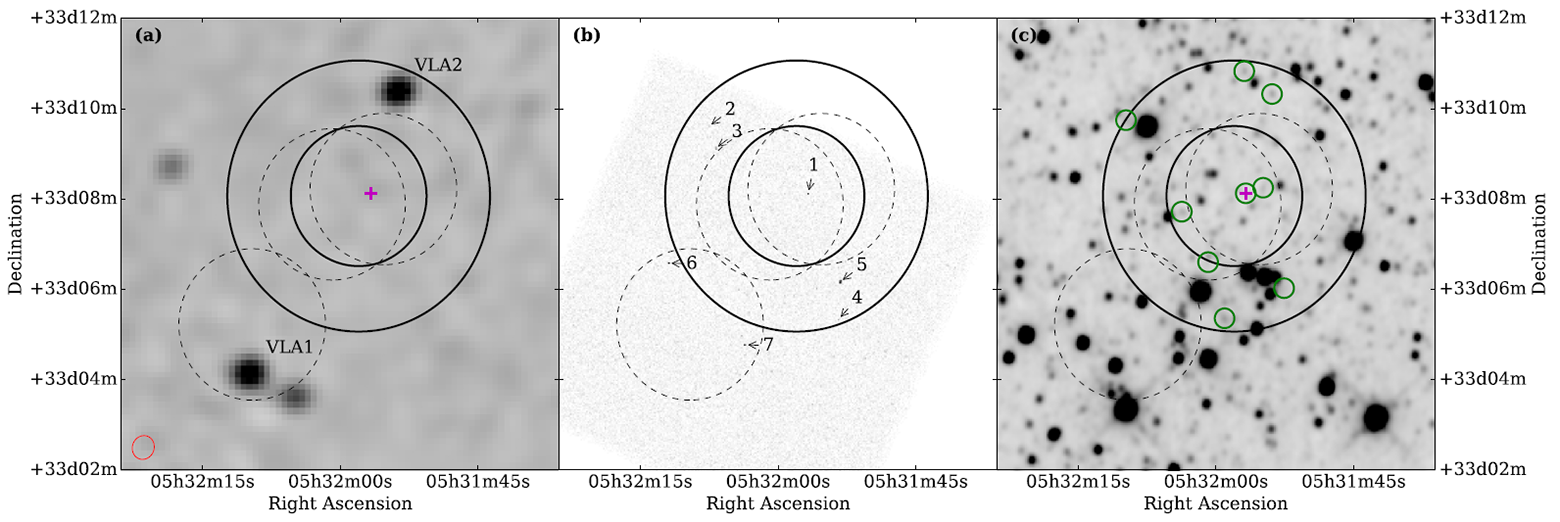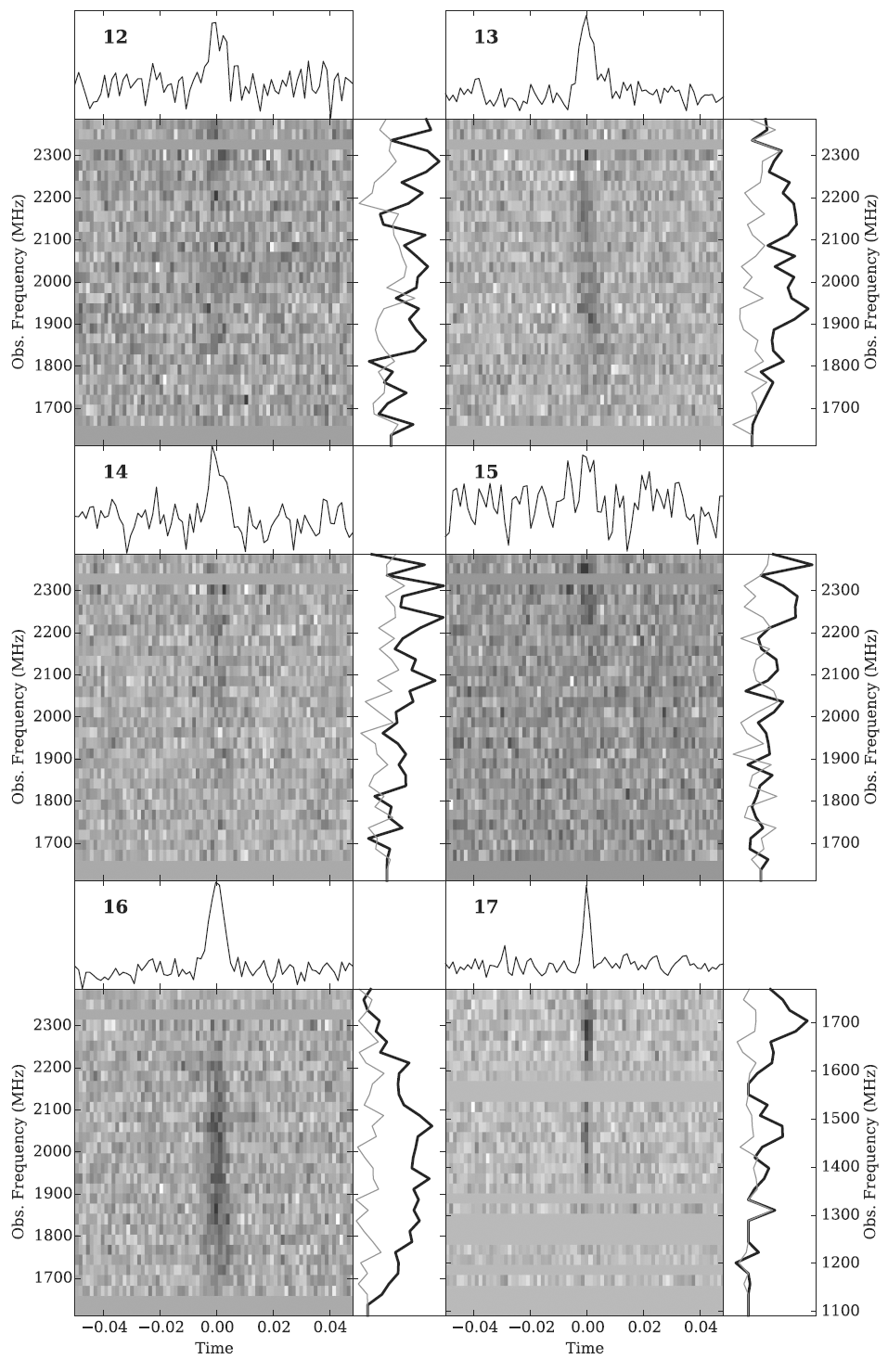Six more signals of unknown nature were received from outside of our galaxy.

Radio, X-ray and infrared images of the region of space where the source of repetitive fast radio bursts is located
In March of this year, scientists recorded 10 fast radio bursts - powerful bursts of radio emission, the source of which is the same region very far outside the Milky Way. Naturally, he was placed under closer observation. And now a group of astrophysicists reported receiving six more signals from the same area. At the moment, this region of space is the only known source of repetitive fast radio bursts in the Universe.
Fast Radio Burst (FRB) - single radio pulses lasting several milliseconds of unknown nature, recorded by radio telescopes. The FRB was first discovered in February 2007 by chance in the archives of six-year-old observations of the Australian 64-meter radio telescope Parkes. This first recorded surge (FRB 010724), sometimes referred to as the Lorimer's surge, is named after the leader of the discoverer group, Professor of the University of West Virginia, Duncan Lorimer.
FRB - powerful, but elusive signals that last only a few milliseconds. But in this short time, a fast radio burst ejects energy that is approximately equal to the energy emitted by the sun for the whole day. Despite all the distinctive features of the FRB, scientists still guess at the nature of these signals. There are several theories.
')
One theory says that this is a terrestrial signal produced by technical devices. This is indicated by an interesting feature of the FRB - fast radio bursts come mainly at the end of a second according to the UT time , which makes them look like peritons.
According to another theory, an extra-galactic source of signal is some kind of exotic event like the merging of two neutron stars.
Such versions could be confirmed if the sources of FRB were evenly distributed across the sky. At first, it was assumed that this was indeed the case, and scientists estimated that up to 2,000 such radio bursts occur every day. They are simply very difficult to detect due to their short duration and unpredictability. However, both of these theories are questioned after the discovery of the first source of repetitive FRB outside our galaxy, which became known in March of this year. Now received new data about this source. Since more than a dozen FRBs have come from him, the time has come to put forward new theories.
The first radio signals reported in March 2016 were actually observed in May and June 2015. These were the first FRBs outside our galaxy and the first FRBs, constantly coming from one source. Of these, four signals were registered by the Arecibo telescope, they were separated by intervals of 10 minutes from each other. A month later came another four signals. And then the scientists carefully analyzed the archive data and found the oldest signal from this place, from 2012.
Now a group of researchers from McGill University in Canada discovered six more signals from this place in space, now designated as FRB 121102, by the name of the first FRB from 2012.
This time, the signals are recorded by different radio telescopes: five of them are the Green-Bank radio telescope at a frequency of 2 GHz, and one more by the Arecibo observatory at a frequency of 1.4 GHz. This completely eliminates the version of the terrestrial signal source, because the radio telescopes are geographically located at a distance of approximately 2500 km from each other.

We now have information about 17 signals from this place.
The table below provides full information on all dates of observation of a given region of space, indicating the time of the beginning of observations, the name of the radio telescope, the duration of the observation in seconds and the number of recorded fast radio bursts.

Here is what the dynamic spectrum of each of the six bursts recorded in November and December 2015 looks like.

Assuming that many signals come from one place, this cannot be a merger of two neutron stars. Maybe a young neutron star, which periodically pulsates in our direction as it rotates, as if transmitting a signal in Morse code. Or are these two different sources that are in the same region of space. In general, while there is no explanation.
We know that according to the laws of physics, the existence of intelligent life in the Universe is possible. We know that before those who are able to reach the Earth, we are defenseless, and we can not escape from the Earth. From the variety of stars in the Universe it is also clear that the probability of such an event is rather high. However, we raise our eyes and look into the starry sky without fear. Such courage is completely natural, because a deadly clash with an alien civilization occurs only once. Evolution had no chance of adjusting our reaction accordingly.
The scientific work was published on December 16, 2016 in The Astrophysical Journal (doi: 10.3847 / 1538-4357 / 833/2/177).
Source: https://habr.com/ru/post/400319/
All Articles